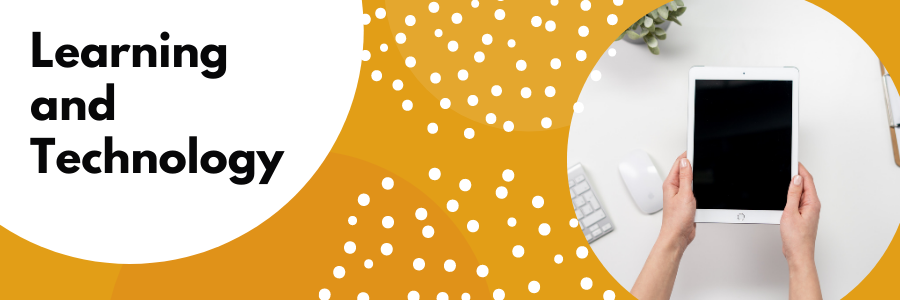Michael Conlon (@mconlon68) from XMA discusses the role technology can play in enhancing learning and the research that underpins this.
Teachers have met and seen off many a snake-oil salesman in their teaching careers, so it is not entirely surprising to be faced with a few arched eyebrows and the general air of suspicion when you rock up to a school with a suitcase full of iPads. They may be expecting a sermon on the “transformational power of technology”, all hallelujah choruses and “blessed be the touch screen”. We’re a bit more grounded in reality at XMA because it’s teachers that transform students’ lives, so whilst we do believe in “transformational power” much of its source lies in the teacher, and their ability to use technology for learning.
“Technology will not replace great teachers, but technology in the hands of great teachers can be transformational.”
George Couros,
“ The Innovators Mindset: Empower Learning, Unleash Talent, and Lead a Culture of Creativity”
By all accounts, teaching is a research-based/research-led profession. The reality is that you’ll not find many teachers who have been deeply involved in academic research. Much of the research that is published is undertaken by academics who haven’t spent much time with the objects of their study, by which I mean students. Research evidence definitively concluding that technology will raise attainment is quite tricky to nail. That shouldn’t surprise us. Teaching and learning are complex, and so are students. There are a thousand other variables in play in any given week in your classroom, so being able to pin attainment on the technology – the printer, the interactive whiteboard, the laptop -is actually very hard.
A better approach is to start by leaning into the research on how learning happens, what the impediments to learning are and how the brain develops. We have oodles of that research and plenty of evidence to hand. It is then that you can look at the functionality afforded by the technology that can support, extend or accelerate the learning, overcome those impediments or even offer you teaching and learning experiences previously unavailable to you or your students.
So as a start, we could look at some of the well-quoted work of John Hattie in his Visible Learning research. Take feedback, for example, one of the top 10 influences in improving students’ progress in learning. One of the core tenets of its success is that feedback is timeous and elaborative in manageable chunks. We know that when we assign a grade with written feedback, pupils don’t get much far past looking at the grade. In a digital environment, when a piece of work has been submitted digitally, or even a picture of their work has been submitted digitally, we now have the opportunity to deliver voice feedback. This allows for elaboration, and in the same empathetic, knowledgeable tone that reflects the nature of your relationship with that student. Written feedback on paper usually has to be condensed and short, written in a way that does not reflect in any way your relationship with that student and the way you would relay feedback to them if you were face to face. Lots of apps do this now, from Seesaw in primary to Showbie in secondary as well as in particular apps in Office 365 and Google GSuite. Teachers who use this approach report that feedback takes less time as it is quicker to put your thoughts into the audio clip than the thinking required to condense what you mean into a few short statements that you write on the page. Students report they find that kind of feedback much more useful in helping them understand the next steps and provides greater clarity and personalisation in what the teacher is trying to say.
Dual-Coding is a well-established theory[1] in education that essentially equates to the idea that a picture is worth a thousand words, and that when we combine visual and verbal explanations of concepts, ideas etc., then we are much more likely to recall and remember that information. This is different from learning styles – visual, auditory and kinaesthetic – which, as a theory of learning, has been debunked in every piece of research evidence I’ve come across.
There is a bit of an art in getting dual coding right – choosing the correct visuals, ensuring students had the opportunity to study the visual before you start talking, treating text and verbal communication as the same thing – but technology not only allows you to choose from a rich source of visual images across the internet but also to create your own, built from images or videos you’ve taken, using icons and infographics apps or allowing you to sketchnote on the screen itself. More powerfully, with every student now having a camera in their own hands and with access to the same resources you have, they can build their own learning assets and presentations. The iPad, for example, has everything you need to help them to produce infographics, timelines, diagrams and cartoon strips that strengthen their memory traces.
Here’s an interesting article about Dual-Coding in the classroom: https://bit.ly/2IAMLWV
One of Hattie’s most important findings was in the impact of collective teacher efficacy, the idea that staff can accomplish great things when they believe in their ability to positively affect outcomes for their students and that if they believe that then they most likely will. I hope that as iPads are introduced into the school, teachers will take the opportunity to be active researchers in their own classrooms, linking the technology to how learning happens and growing together with their students about how to make technology work for them and what they are trying to achieve. We’ll undoubtedly be there to support those discussions and can’t wait to work with you in the classroom in bringing so many positive benefits to teachers and students.
[1] PAIVO,A. (1986). MENTAL REPRESENTATIONS: A DUAL-CODING APPROACH. NEW YORK, NY: OXFORD UNIVERSITY PRESS


